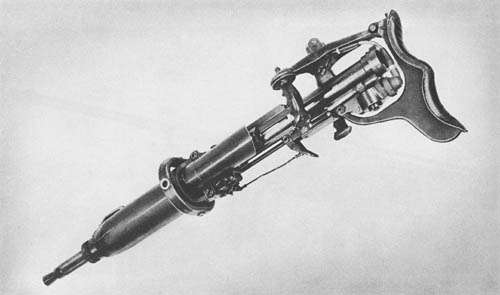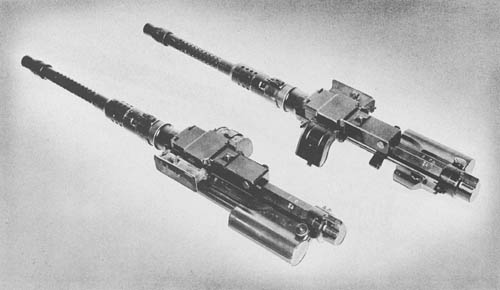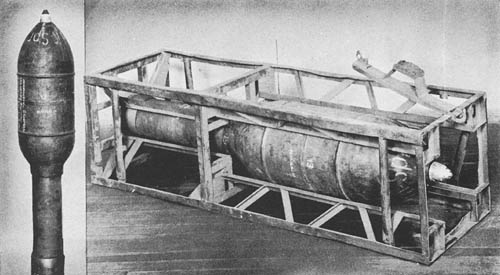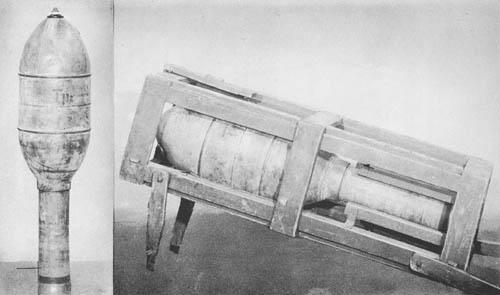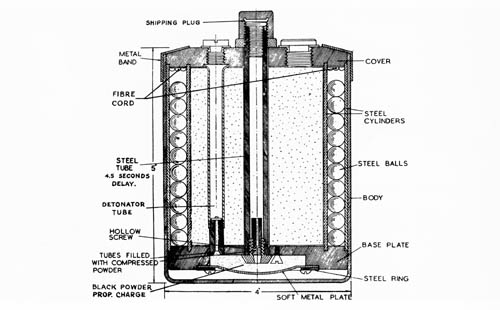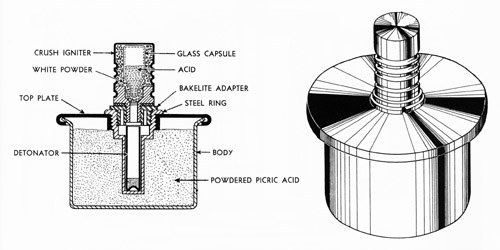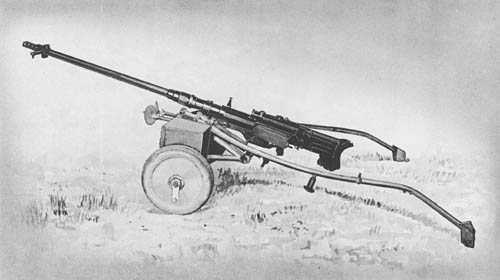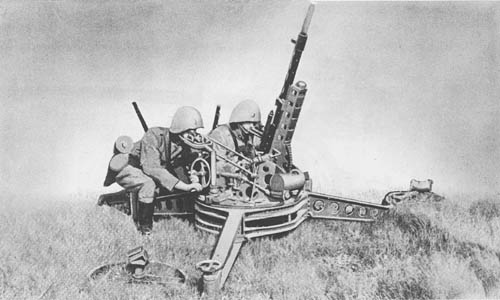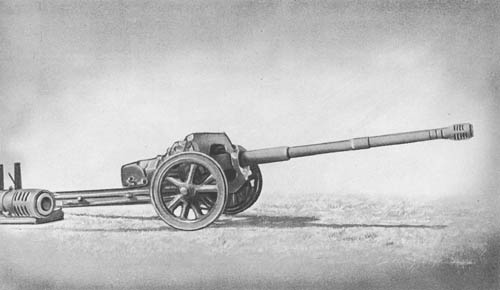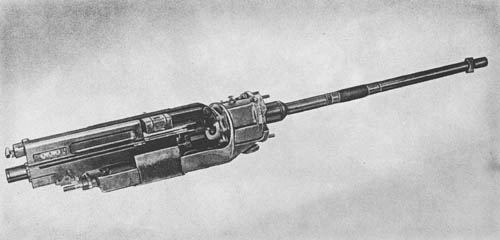
The M.G. 151/20 mm and M.G. 151/15 mm (Mauser) were designed and built by the famous Mauser factory. The M.G. 151/20 is a fixed aircraft cannon, recoil-operated and belt-fed, using a disintegrating metallic link belt. It was manufactured also in a 15 mm form. Although the receiver group and the recoiling portions are not identical, the superficial appearance of the two guns is very similar.
Two of these guns are mounted in each of the Focke-Wulf FW 190 types of planes. In this installation, they are synchronized, firing through the propeller arc. They are installed in the wing roots about 12 inches out from the engine cowling with the barrels protruding about 2 feet beyond the leading edge.
This gun is electrically cocked and fired, and electric detonation of the cartridge has been adopted in order to facilitate interruption when it is used as a synchronized gun. A longer-barreled version with mechanical detonation is used when the gun is mounted to fire through the propeller hub as in the ME-109.
In the version mounted in the fuselage, the feeding device has a capacity of 50 rounds, but more rounds are usually carried for each gun when it is wing mounted. A streamlined container holds the gun and the belted ammunition in newer installations.
The following types of ammunition are used in the 20 mm version: H.E. with S.D. fuze; H.E.I./T. with S.D. fuze; A.P.I., A.P.H.E., and two different H.E.I. (S.D. fuze) rounds.
SPECIFICATIONS
| Caliber | 20 mm (.787 in.) | |
| Weight including electric control | 93 1/2 lb. | |
| Weight of barrel | 22 lb., 14 oz. | |
| Overall length | 69 1/2 ins. | |
| Length of barrel | 43 1/2 ins. | |
| Principle of operation | Short recoil, no muzzle recoil booster, rotating bolt head | |
| Cooling system | Air | |
| Feeding device | Disintegrating metallic link belt | |
| Capacity of belt | 50 rds. and multiples thereof | |
| Muzzle velocity (H.E.) | 2,656 f/s | |
| Rate of fire | 780 r.p.m. | |
| Ammunition used | H.E. with S.D. fuze; H.E.I./T. with S.D. fuze; A.P.I.; A.P.H.E.; and two different H.E.I. (S.D. fuze) rounds. |
German: p. 252
